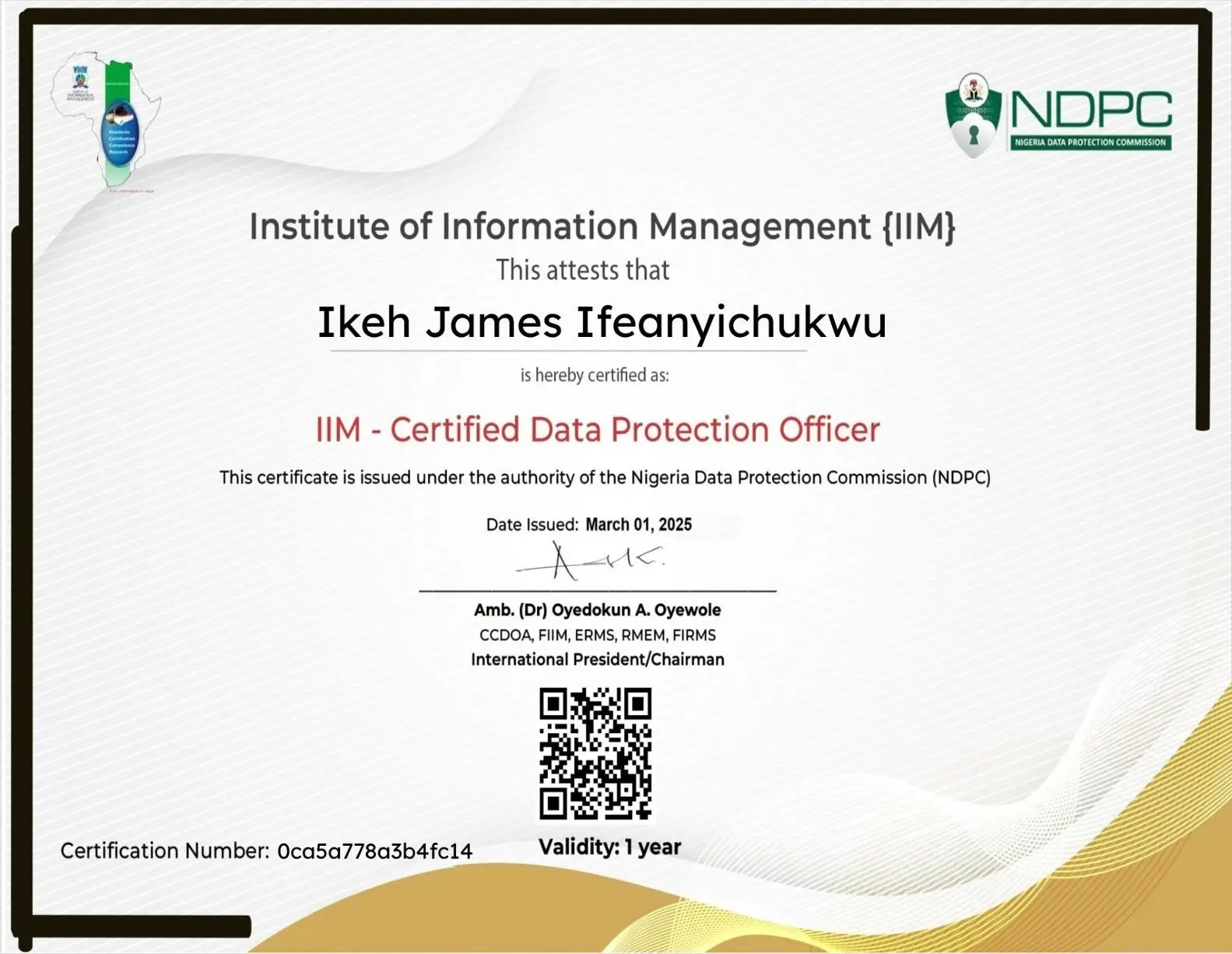Anonymization vs Pseudonymization Explained: Which One Keeps You Safer?
Share

In an era where data is the new oil, organizations handle massive amounts of personal information daily—from customer profiles to employee records. Protecting that data isn’t just a legal requirement under laws like the General Data Protection Regulation (GDPR) and Nigeria Data Protection Act (NDPA)—it’s a critical element of trust.
Two of the most effective methods to safeguard personal data are anonymization and pseudonymization. Though often used interchangeably, they are not the same. Understanding their differences is essential to crafting a strong, compliant data protection strategy.
This guide breaks down both concepts, their legal definitions, key differences, and when to use each.
What Is Anonymization?
Anonymization is the process of irreversibly removing all identifiable information from a dataset so that an individual cannot be identified, directly or indirectly.
According to the GDPR Recital 26, anonymized data is no longer considered personal data—because it cannot be linked back to a person by any means reasonably likely to be used.
Common Techniques of Anonymization
| Technique | Description | Example |
|---|---|---|
| Data Masking | Replacing identifying data with random characters or symbols. | Replacing names with “XXXX”. |
| Data Aggregation | Combining data into groups to hide individual identities. | Reporting “average age of users” instead of individual ages. |
| Generalization | Reducing data precision to make it less specific. | Converting “27 years old” to “20–30 age group.” |
| Suppression | Removing sensitive data entirely. | Deleting fields like name or phone number. |
Once data is fully anonymized, privacy laws like the GDPR or NDPA no longer apply, because it can’t identify a person anymore.
What Is Pseudonymization?
Pseudonymization, on the other hand, refers to replacing identifying details with artificial identifiers or pseudonyms—but keeping the ability to re-identify individuals using additional information stored separately.
For example, a company may replace “John Doe” with “User12345” in a dataset. The mapping between “User12345” and John Doe is kept securely in another database.
Key Features of Pseudonymization
- The data remains personal data under the law.
- It’s reversible—authorized parties can re-identify individuals if needed.
- It’s a risk reduction method, not a complete anonymization technique.
Pseudonymization helps organizations comply with data minimization and security obligations under both GDPR Article 4(5) and NDPA Section 33.
Anonymization vs Pseudonymization: The Key Differences
| Feature | Anonymization | Pseudonymization |
|---|---|---|
| Identifiability | Cannot re-identify individuals. | Can re-identify with additional data. |
| Legal Status | No longer personal data. | Still considered personal data. |
| Reversibility | Irreversible. | Reversible with keys or mappings. |
| Risk Level | Very low risk. | Moderate risk if keys are compromised. |
| Compliance Obligation | Exempt from GDPR/NDPA once anonymized. | Must comply fully with data protection laws. |
| Use Case | Statistical research, data analytics, publication. | Internal analysis, data sharing with partners, testing. |
Why It Matters for Your Data Protection Strategy
Choosing between anonymization and pseudonymization depends on your organization’s goals, data sensitivity, and legal obligations.
1. Use Anonymization When:
- You need to publish or share data publicly.
- Re-identification serves no business purpose.
- Compliance exemptions (like for research or analytics) apply.
Example:
A health agency publishes nationwide COVID-19 trends. The dataset excludes names, IDs, and addresses—only aggregate statistics remain.
2. Use Pseudonymization When:
- You need to retain data utility while protecting privacy.
- You may need to re-identify users later (e.g., for follow-ups or audits).
- You process data internally or share with trusted partners.
Example:
A fintech firm replaces customer names with random IDs for analytics but keeps the mapping file securely stored for customer service verification.
Benefits of Each Method
| Benefit | Anonymization | Pseudonymization |
|---|---|---|
| Enhances privacy | ✅ Maximum | ✅ Strong |
| Legal compliance | ✅ May exempt you from GDPR/NDPA | ✅ Reduces compliance risk |
| Data utility | ⚠️ Limited (less detailed) | ✅ High (retains analysis value) |
| Data breach impact | ✅ Minimal | ⚠️ Lowered but still possible |
| Ease of implementation | ⚠️ Complex | ✅ Easier to integrate |
Real-World Example
Case: European Health Data Sharing Initiative
Researchers across Europe use anonymized patient data to study rare diseases. However, internal hospital systems retain pseudonymized data so authorized doctors can trace records if needed.
This hybrid approach protects individual identities while maintaining research value—a model now adopted globally.
Regulatory Context
Under the GDPR
- Anonymized data is excluded from GDPR scope.
- Pseudonymized data remains subject to GDPR but benefits from reduced compliance obligations (Recital 28).
Under the NDPA (Nigeria Data Protection Act, 2023)
- Recognizes pseudonymization as a security and privacy safeguard.
- Encourages anonymization where data is no longer required for identifiable processing.
Common Mistakes to Avoid
- Assuming pseudonymization = anonymization. They’re legally distinct.
- Failing to protect re-identification keys. This can turn pseudonymized data into a major risk.
- Not documenting the process. Regulators require evidence of how data is transformed.
- Over-anonymizing. Excessive anonymization can destroy data value.
FAQs
Q1. Is anonymized data completely safe?
Mostly, yes. But re-identification is still theoretically possible if new data sources emerge, so ongoing risk assessment is vital.
Q2. Does pseudonymized data fall under GDPR or NDPA?
Yes. Because individuals can still be identified indirectly, it remains personal data.
Q3. Can I convert pseudonymized data into anonymized data?
Yes—by permanently deleting or destroying the mapping keys.
Q4. Which is better for AI or analytics?
Pseudonymization often provides a better balance between data utility and privacy.
Q5. Can I share anonymized data freely?
Generally, yes—once fully anonymized, it falls outside the scope of data protection laws.
Conclusion
Anonymization and pseudonymization are both essential privacy-enhancing techniques, but their effectiveness depends on context.
- Anonymization ensures irreversible protection, ideal for public sharing or research.
- Pseudonymization offers flexibility and data utility while keeping privacy risks low.
For most organizations, the best data protection strategy is a blend of both—anonymize where possible, pseudonymize where necessary, and always document your compliance steps.
In data protection, the smartest strategy isn’t about deleting data—it’s about controlling what can identify you.


























Leave a Reply